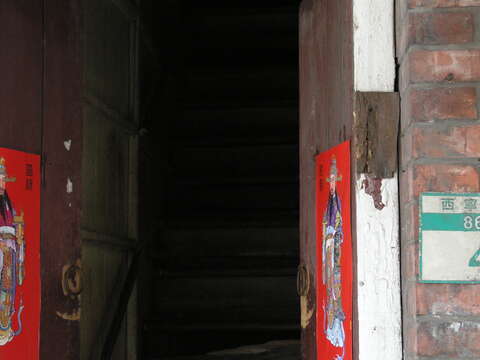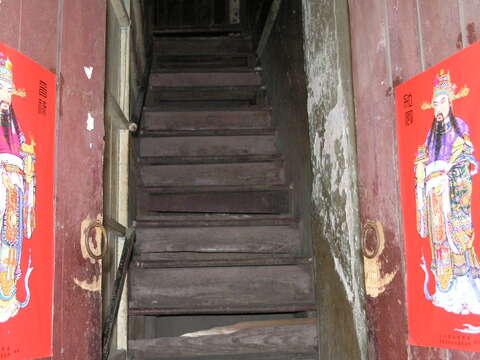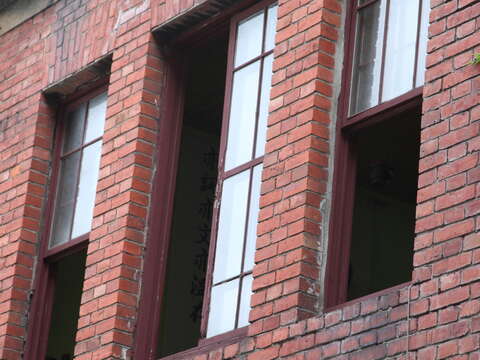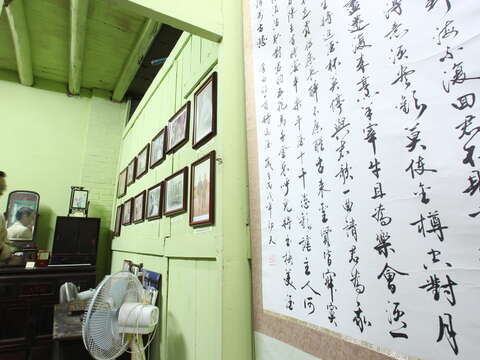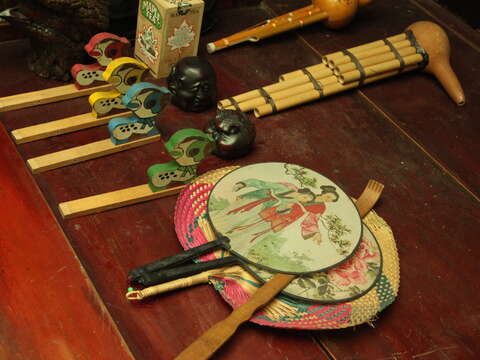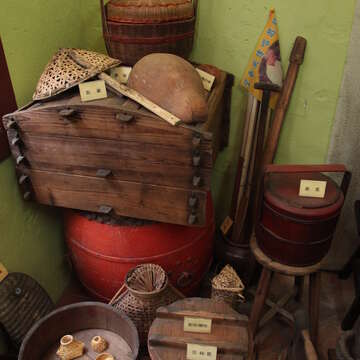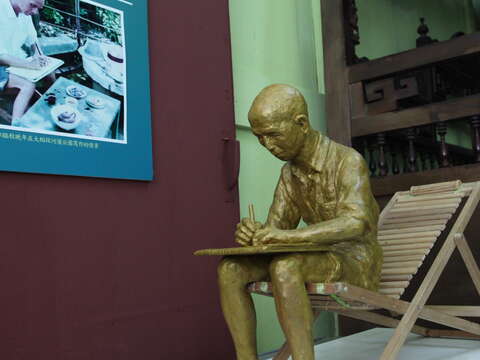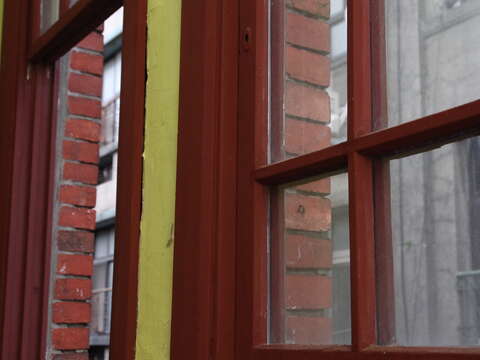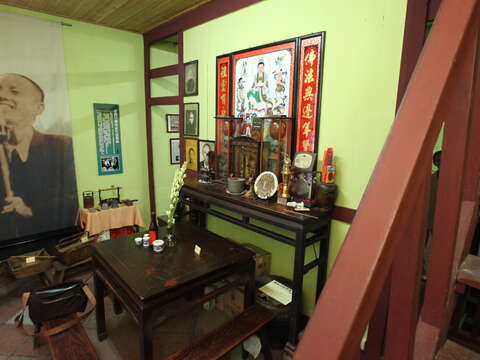Post date:2016-11-22
966
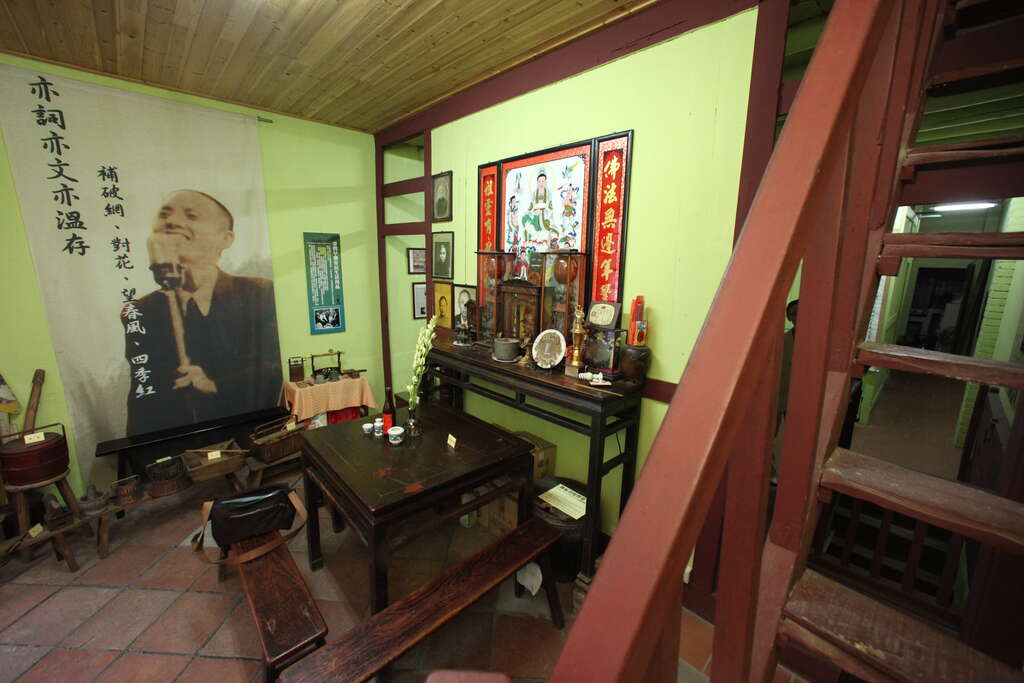
Li Linqiu, born in 1909, is an important representative in the history of Taiwanese popular songs. He wrote his career masterpiece, Wang Chunfeng (Craving for the Spring Breeze) at the age of 25. He also wrote other popular works, such as Yige Hongdan (A Red Egg), Siji Hong (The Ballad of Four Seasons), Bu Po Wang (Repairing the Nets), Xiangsi Hai (Missing the Ocean), and more than 180 classic songs.
The Li Linqiu Residence, located in Dadaocheng, occupies the second floor of a southern Fujian-style house. On display in the residence are Li Linqiu’s manuscripts and old photos, as well as an old Taiwanese-style bed, cupboards, and other items used in daily life at the time. You can also see the trademark registration card for the song “Craving for the Spring Breeze” – a very rare item, indeed!
Coming to this old residence, you must be very curious about this scene of his creativity. Li Xiujian, the son of Li Linqiu, said that some words written on the wall -- “nighttime, liquor, and tuberose” -- are the best commentary: “At the old residence now we can see the table and chair used in his creation of songs such as “Craving for the Spring Breeze”, as well as “nighttime”, which was the first element of his creativity, since nighttime inspiration was less likely to be interrupted. The next element, liquor, was red liquor (honglu jiu). My father said that liquor was a source of creation – without liquor, he could not produce good works. Last was tuberose. At night, the aroma of alcohol was not enough. There should be “the aroma of female companionship”, but this was not allowed in the house, so he used the fragrance of flowers as a substitute.
If you want to hear more of Li Linqiu’s songs, “Craving for the Spring Breeze”, “A Red Egg”, and other classics are regularly played at a statue of Li Lin-qiu, created by the artist Pu Haoming, in Dadaocheng Park near the old residence. So, the next time you’re in the area, softly hum “Craving for the Spring Breeze”, a song that was the rage in Taiwan more than 80 years ago, and enjoy a leisurely stroll through Dadaocheng!
The Li Linqiu Residence, located in Dadaocheng, occupies the second floor of a southern Fujian-style house. On display in the residence are Li Linqiu’s manuscripts and old photos, as well as an old Taiwanese-style bed, cupboards, and other items used in daily life at the time. You can also see the trademark registration card for the song “Craving for the Spring Breeze” – a very rare item, indeed!
Coming to this old residence, you must be very curious about this scene of his creativity. Li Xiujian, the son of Li Linqiu, said that some words written on the wall -- “nighttime, liquor, and tuberose” -- are the best commentary: “At the old residence now we can see the table and chair used in his creation of songs such as “Craving for the Spring Breeze”, as well as “nighttime”, which was the first element of his creativity, since nighttime inspiration was less likely to be interrupted. The next element, liquor, was red liquor (honglu jiu). My father said that liquor was a source of creation – without liquor, he could not produce good works. Last was tuberose. At night, the aroma of alcohol was not enough. There should be “the aroma of female companionship”, but this was not allowed in the house, so he used the fragrance of flowers as a substitute.
If you want to hear more of Li Linqiu’s songs, “Craving for the Spring Breeze”, “A Red Egg”, and other classics are regularly played at a statue of Li Lin-qiu, created by the artist Pu Haoming, in Dadaocheng Park near the old residence. So, the next time you’re in the area, softly hum “Craving for the Spring Breeze”, a song that was the rage in Taiwan more than 80 years ago, and enjoy a leisurely stroll through Dadaocheng!
 Li Linqiu Residence
Li Linqiu Residence